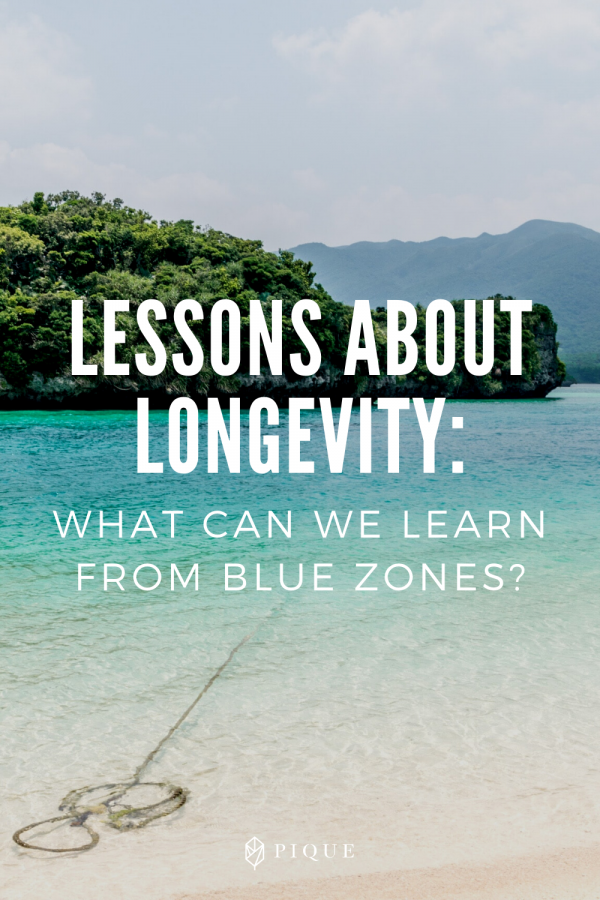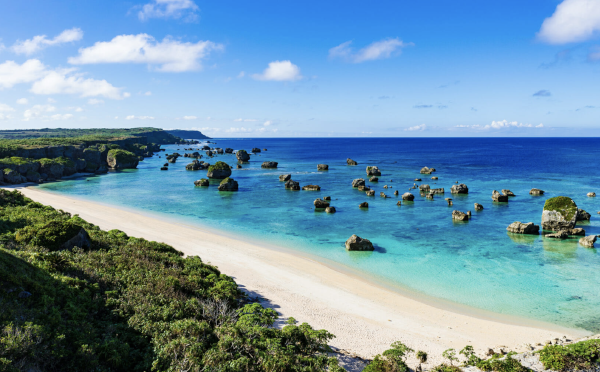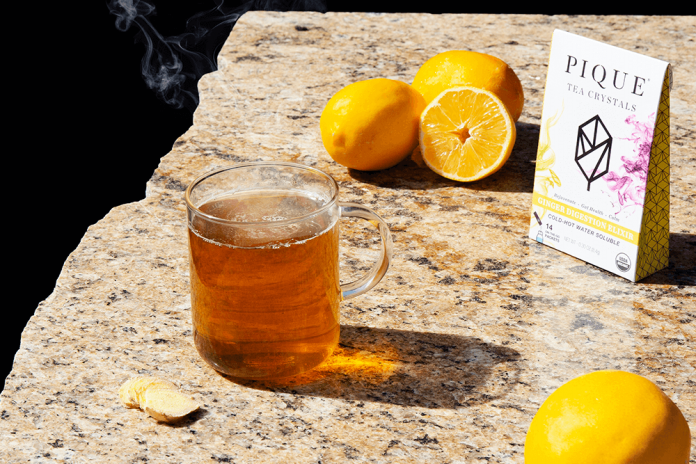Is longevity truly “all in your genes,” as many people believe?
Actually, data from twins suggests that genes only account for a fraction of human lifespan (about 20%). (1)
The rest comes down to a healthy diet, lifestyle, and–of course–a bit of luck.
Fortunately, new research on longevity is helping to remove much of the former mystery around diet and lifestyle. Among the most compelling is the work studying “Blue Zones,” the five locations with the longest-lived, healthiest people in the world.
This article explores the best science on living a long life that’s also fulfilling and meaningful. We’ll take a particularly close look at lessons from Okinawa, the Japanese island region with more people over 100 than anywhere else in the world.
The Blue Zones: Havens of Longevity
The Blue Zones are characterized by lower rates of chronic diseases, resulting in more centenarians (people over 100 years old). (2)
Typically, residents eat traditional diets–like the Mediterranean diet for instance, characterized by abundant amounts of red wine and olive oil–and follow other local customs that set them apart from the mainstream.
The term “Blue Zones” was first used by author Dan Buettner when he set out to discover the areas of the world with the highest life expectancy. (2) However, other research has also confirmed their validity. (3)(4)(5)
Here are the five original Blue Zones (2):
- Ikaria Greece: Ikarians live approximately eight years longer than Americans with less chronic disease, and practically no dementia. They follow a modified version of the Mediterranean diet and “downshift” every afternoon with a mid-afternoon break or nap.
- Sardinia Italy: Boasting the world’s longest-lived men, Sardinians walk five miles in the mountains every day, eat a mainly plant-based diet, and drink a special type of wine that’s extremely high in flavonoids.
- Nicoya Peninsula Costa Rica: Per capita, Nicoyans spend less than a fifth of what the United States spends on healthcare, but are twice as likely to live past 90 as Americans. They avoid processed foods and eat plenty of antioxidant-rich tropical fruit.
- Okinawa Japan: With the longest-lived women in the world and more centenarians than anywhere else, Okinawa stands out. Potential reasons include a diet high in therapeutic plants and low in red meat, and a strong, close-knit social structure.
- Loma Linda California: The Seventh-Day Adventists in Loma Linda derive their diet from the Bible, focusing on eating plenty of leafy greens, nuts, and legumes. Here, you can find centenarians who still actively work and do their own renovations.
Potentially, there may be other undiscovered areas where people live healthy lives that are far longer than average. The field of longevity demographics is a relatively new one.
However, of the original Blue Zones, one in particular merits extra attention.
Okinawa, Japan
What makes Okinawa special, even among the world’s longevity hotspots?
For one thing, compared to other Blue Zone locations, it’s received plenty of validation from independent life span researchers–people who are publishing in peer-reviewed journals as opposed to writing popular books. (4)(6)(7)
And according to the research, Okinawa has more centenarians than anywhere else in the world, even more than Japan as a whole (the nation with the highest life expectancy from birth). (7)
But just as fascinating to consider is what Okinawa isn’t.
Okinawa is not rich – it’s actually the poorest prefecture in Japan. (3)
The Okinawan people don’t have easy access to world-class medical care, and the more isolated regions of the archipelago have very limited medical facilities. (8)(9)
And the average education and literacy rates there are lower than Japan. (10)
In other words, Okinawa defies a number of assumptions we may have about longevity. Wealth, medical access, and education are undoubtedly important, but they may not be the keys to a long life.
In the next section, we’ll take a look at valuable life lessons from Blue Zones, with a special emphasis on what we can learn from the Okinawan people.
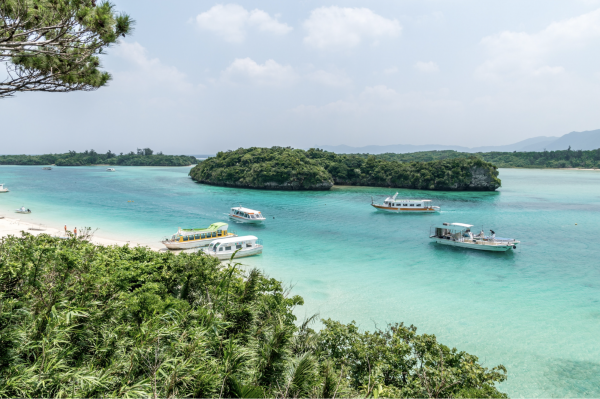
7 Life Lessons from Blue Zone Regions
1. Constant physical activity
People in Blue Zones stay active for life, but visit the gym rarely (or never).
Instead, they spend time outside every day, walking to visit friends or family and working in the garden.
Many Blue Zone residents also have a “do-it-yourself” work ethic, meaning they’re hesitant to hire helpers, even in old age.
And in Okinawa, people eat sitting on the floor, which promotes mobility and lower-body strength. Studies demonstrate that mobility and fall prevention are essential factors for senior citizens to remain independent. (11)(12)
2. Ikigai, or a sense of purpose in life
Ikigai is a Japanese word that translates to “a sense of purpose in life” or “a reason to live.”
In Okinawa, older people often have a sense of purpose based on their relationship with friends and family. Feeling needed can help prevent many of the pitfalls of growing old, such as depression or loneliness.
For women in Okinawa, ikigai often includes traditional spiritual responsibilities within the family or larger social circles, such as communicating with ancestors or offering guidance to the community. Roles of this nature can foster a sense of usefulness and self-worth.
A 2008 study of 43,391 Japanese men and women found that knowing one’s ikigai lowered the risk of death from all causes, but particularly from cardiovascular disease. (13)
3. Lifelong work (without rushing or hurrying)
In the local Okinawan dialect, there is literally no word for “retirement.” Many of the healthy seniors in Okinawa have never stopped working their entire lives.
Instead of rushing towards retirement and losing years and quality of life to stress, it may be healthier to work your entire life–provided that your work is fulfilling.
It’s easy to see how slow and steady work can keep you active and engaged, especially combined with regular physical activity and a strong sense of ikigai.
4. Moai, or the importance of social ties
Moai is an Okinawan tradition that involves keeping a powerful social network.
In many cases, Okinawans keep the same five or so friends close for their entire life. The moai provides crucial emotional and social support that research has linked to increased longevity. (14)
But even if you don’t have five ultra-close friends from childhood, you can still learn from the moai tradition and seek to develop meaningful, long-term ties that offer mutual support and help prevent isolation.
5. A mainly plant-based diet
Similar to Japanese people in general, the people of Okinawa eat a diet that’s primarily plant-based, though not quite vegan.
However, a few aspects set the traditional Okinawan diet apart, even among Blue Zone diets. For one thing, it includes less rice than the average Japanese diet. Instead, the sweet potato is a staple. (15)
On the whole, the diet is high in unrefined (whole food and low glycemic) carbs and green and yellow vegetables, with moderate protein intake coming mainly from legumes, fish, lean meats, and soy foods and soy products like miso. (15) It’s low in saturated fats, but higher in mono- and polyunsaturated fats, especially omega-3 fats. (15)
Lastly, Okinawans value freshness, and there’s no better way to obtain fresh foods than from a vegetable garden. Seeing people over the age of 90 outside their homes harvesting veggies for dinner is not an uncommon sight – talk about a “longevity diet!”
6. Hara hachi bu, or “belly not full”
Hara hachi bu or hara hachi bun me is a Japanese concept that means “belly not full.”
The idea used to be more popular throughout Japan, and some people believe it goes back to the time of Confucius.
Although its popularity has recently declined in Japanese culture, many Okinawans still follow this practice.
In a nutshell, hara hachi bu is about only eating until you are 80% full, then stopping.
Along with stopping just short of fullness, the other element of hara hachi bu is mindful eating. As you eat, be sure to not only relish the meal, but also to pay attention to your body–that way you can determine when you’re nearly full and stop eating.
Some scientists think that this technique has increased longevity in Okinawa because it can help prevent obesity and may have similar effects to other forms of calorie restriction, such as fasting. (16)(17)
7. Keeping a medicinal garden
Okinawan people certainly value gardening as a source of fresh food, physical activity, and stress relief.
But those aren’t the only reasons they maintain a garden each year. The ancient practice of keeping a personal medicinal garden is also alive and well in Okinawa.
Sometimes the line between food and medicine is blurry; many plants serve both purposes. Medicinal gardens usually include longevity foods and herbs like sweet potatoes, soybeans, mugwort, goya or bitter melon, and turmeric–all of which are proven in studies to have remarkable health benefits. (18)(19)(20)(21)(22)
The Golden Spice of Longevity: Turmeric Root and Fermented Turmeric
As we discussed in the previous section, food and medicine often overlap, and the “Okinawa diet” is different from any other diet in the world.
Turmeric (Curcuma longa) is one dietary staple that appears to be an essential ingredient for Okinawan longevity. (17)
Local names for turmeric include ukon, ucchin, or jianghuang. Tea made from turmeric, a local favorite, is known as ukoncha.
This golden-colored rhizome (root) and spice has antioxidant, anti-stress, and anti-inflammatory properties. (23)
Researchers have also investigated it for its ability to prevent weight gain and support heart health, neurological health, a healthy immune system, a healthy digestive system, and beyond. (23)(24)
But along with high doses of fresh and cooked turmeric, people in Okinawa also consume a special form of fermented turmeric.
Research suggests the natural fermentation process increases bioavailability of curcumin and other antioxidant polyphenols found within the root. (25)
In addition to offering better absorption, fermented turmeric also acts as a probiotic, providing your gut with beneficial bacteria. (26)(27)
The anti-inflammatory effects of turmeric may be the most significant factor in its contribution to longevity. Some researchers even think chronic inflammation due to free radical activity causes the majority of age-related health problems. (28)
And the improved bioavailability of fermented turmeric likely enhances the herb’s already considerable anti-inflammatory activity. (29)
A preliminary study points to the possibility that fermented turmeric protects brain cells and may support brain health in a way that reduces the chances of dementia, which would make sense in the context of the remarkable quality of life among Okinawan elders. (30)
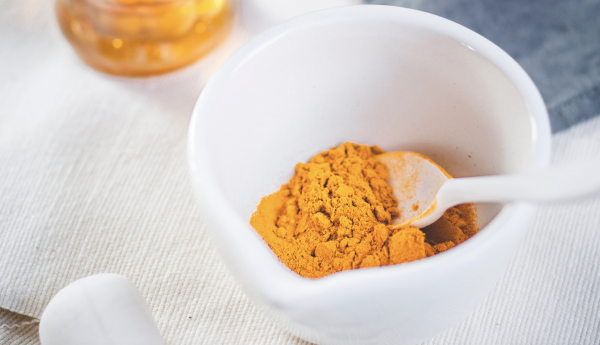
Final Thoughts
What can we really learn from Blue Zones?
If you want to live as long as possible, a balanced and fulfilling life is the ticket.
A holistic view of health includes psychological and spiritual well-being along with physical wellness.
And a connection to the people around you, time in nature, healthy traditional foods, and engaging lifelong work are the best ways to sustain your health.
You don’t have to live in a literal Blue Zone as identified in the research to adopt these practices, nor do you need special genes or above-average levels of wealth, medical care, or other resources.
